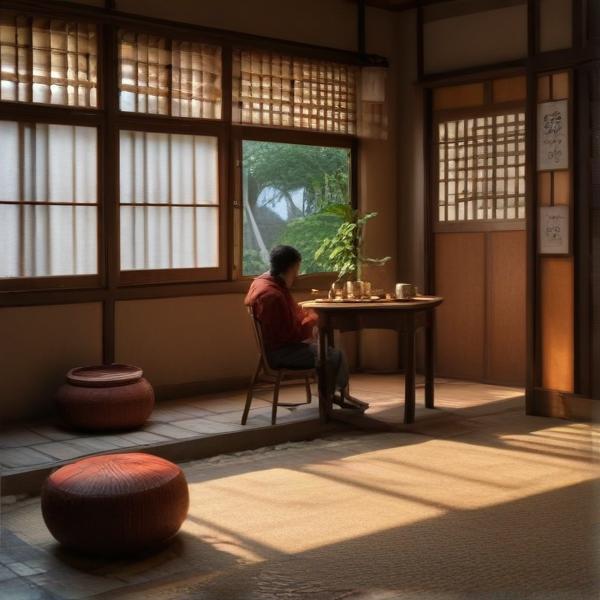基本信息 (Basic Information)
含义与用法 (Meanings & Usage)
中文核心释义 (Core Chinese Meaning): 再次、又一次、还、继续。
英文核心释义 (Core English Meaning): again, once more, further, continue
象形意义 / 为何这么写 (Pictographic Meaning / Writing Rationale)
文言文释义 (Classical Chinese Meaning)
与现代意义相近,指“再次、重复”。Similar to modern meaning; it refers to 'again' or 'to repeat'.
深入学习 (In-depth Study)
字源故事 (Origin Story)
字形演变 (Character Evolution)
常用词语和例句 (Common Words & Examples)
再见 (goodbye (literally: see you again))
下课后,同学们互相说“再见”。
Eng: After class, the students said 'goodbye' to each other.
再来一次 (do it again; one more time)
我没听清,请你再来一次。
Eng: I didn't hear clearly, please do it again.
再说 (talk about (it) later; besides)
这件事我们以后再说。
Eng: Let's talk about this later.
相关成语 (Related Idioms)
相关成语信息待补充。Related idiom information pending.
多语言翻译 (核心释义) (Translations (Core Meaning))
- French: encore, de nouveau
- German: wieder, nochmals
- Spanish: otra vez, de nuevo
- Italian: di nuovo, ancora
- Portuguese: de novo, outra vez
- Russian: снова, ещё раз
- Arabic: مرة أخرى، مجدداً
- Persian: دوباره، بار دیگر
- Dutch: nog eens, opnieuw
- Polish: ponownie, jeszcze raz
- Vietnamese: lại, nữa, lần nữa
- Ukrainian: знову, ще раз
视频学习资源 (Video Learning Resources)
通过以下链接在热门视频网站搜索 "再" 的更多讲解:
Search for more explanations of "再" on popular video sites:
- 在 Bilibili.com 搜索 "再 字源 说文解字" (Search on Bilibili)
- 在 YouTube.com 搜索 "再 character origin etymology" (Search on YouTube)
网络参考 (Web References for "再") ()
网络内容摘要 (Web Content Summary):
核心含义与起源:汉字“再”(拼音:zài)最初见于商代甲骨文,最早的字形像两条鱼,或在鱼上加“两画”,表示“二鱼”。本义为“第二次、再一次”,后来引申为“重复、继续”,以及“然后”、“另外”等意思。 Main meaning & origin: The character "再" (zài) first appeared in oracle bone script of the Shang dynasty. Its earliest forms resembled two fish, or a fish with two additional strokes, symbolizing "two fish." The original meaning is "the second time, again," later extended to "repeat, continue," and also to indicate "then" or "additional".
- 常用法:“再”常用于表达“再次”、“继续”,如“再见”(see you again)、“再说”(talk about it later);也可用作连接词,表达动作先后(如“……,再……”,意味着完成前一动作再继续下一步)。 Common usages: "再" is often used to mean "again, once more," as in “再见” (see you again), “再说” (talk about it later). It can also connect actions in sequence, meaning "after that, then".
- 容易混淆点:不要将“再”和“在”(location/time marker)混淆。“再”表达次数或顺序,“在”指地点或正在进行的状态。 Common confusion: Do not confuse "再" (again, sequence) with "在" (location, ongoing action). "再" relates to occurrence or order, "在" refers to place or ongoing status.
常见搭配/短语:如“再来一次”(one more time)、“再等等”(wait a bit longer)。 Common phrases: e.g., "再来一次" (one more time), "再等等" (wait a bit longer).
成语引用情况:无明显高频成语,但常见于日常表达。 Idioms: Not commonly found in idioms, but very frequent in everyday speech.
汉字"再"的起源、演变过程-汉字字源辞典
汉字字源辞典收录350条汉字词条,基本涵盖了常见汉字的字源解析,是汉字研究的必备工具。 ... 【形义】甲骨文再字像鱼形,或鱼上加两画(二),表示二鱼。金文发生讹变,不像鱼形了。 ...
再_百度百科
再(拼音:zài)是汉语通用规范一级字(常用字)。此字始见于商代甲骨文。据《说文解字》,本义是两次、第二次。现多用于表示"再一次"。引申有重复、继续等义;也引申为另、另外,用来表示另有补充之义;"再"还可引申为然后义,表示动作的先后关系。
更多图片 (再 More Images) ()
